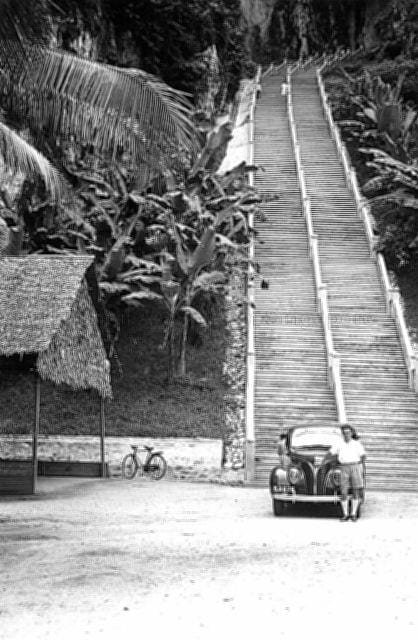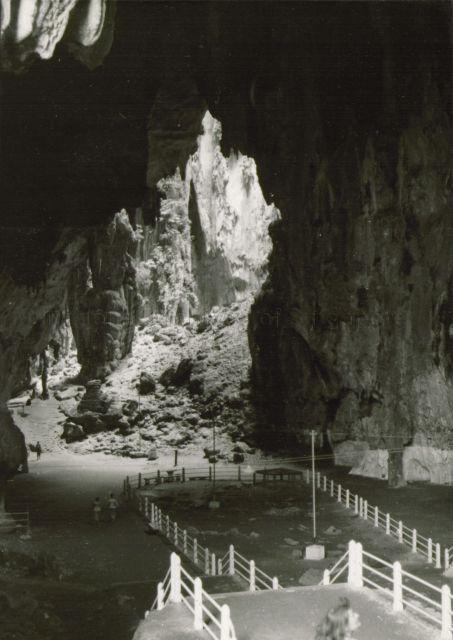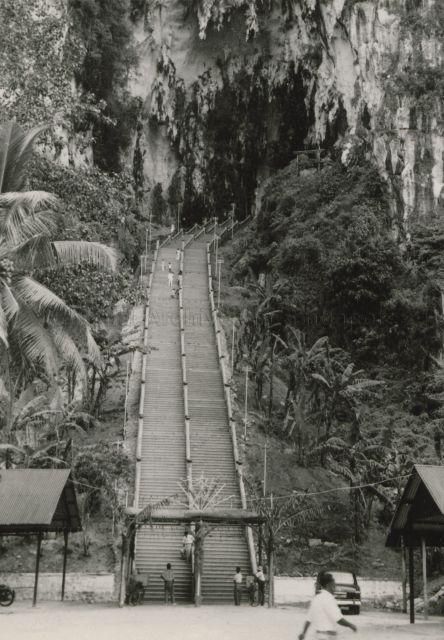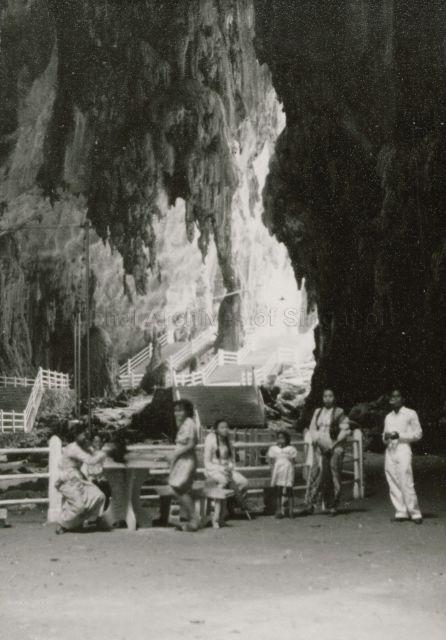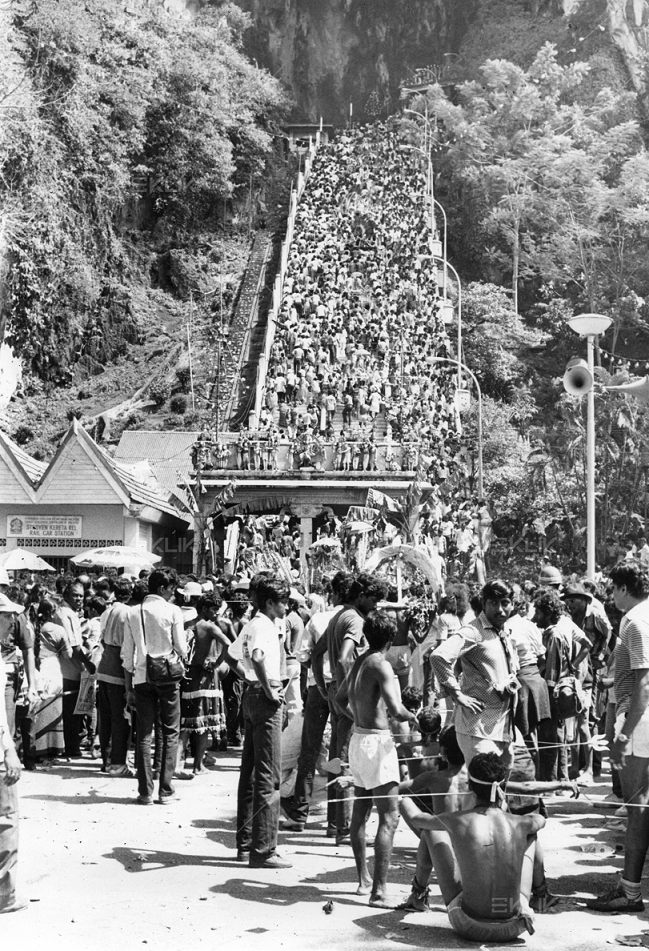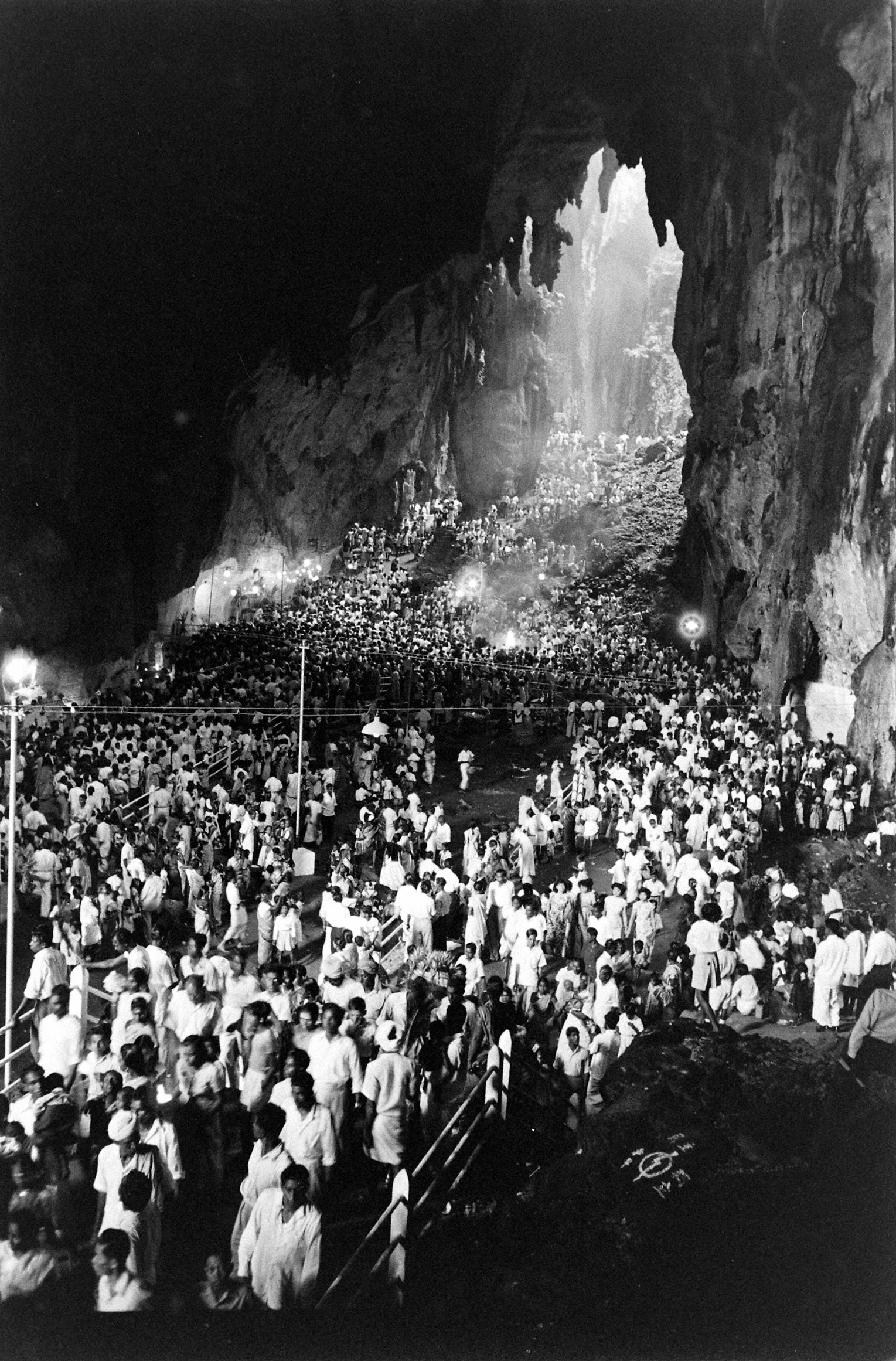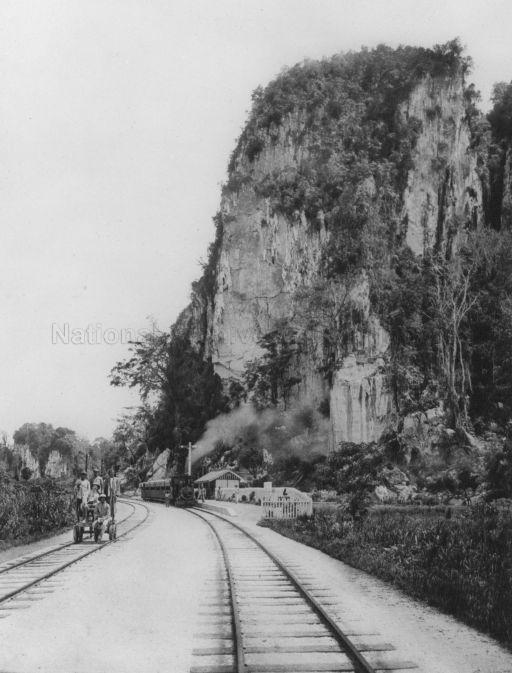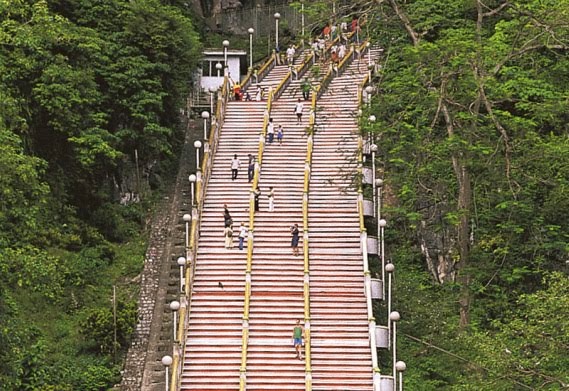From Wooden Steps To Escalators: Here's How Batu Caves Is Changing Over The Years
All 272 steps used to be made of wood.
The iconic Batu Caves has undergone significant changes over the past decades
These ancient limestone caves, estimated to be a staggering 400 million years old, boast a rich history.
Little was known about the caves prior to 1878. However, things took a turn when American naturalist William Temple Hornaday visited and unveiled its existence to the world that year.
Fun fact: Before it became the landmark it is today, Batu Caves was actually used as living quarters and shelter by the Temuan tribe, the fourth-largest tribe among the 18 Orang Asli groups in Peninsular Malaysia.
The foot of steps leading up to entrance of Batu Caves in Selangor, Malaya sometime between 1937 and 1938.
Image via RAFSA Collection, courtesy of National Archives of SingaporeIn 1890, K Thamboosamy Pillai, an Indian trader, was inspired by the cave entrance's resemblance to Vel, Lord Murugan's weapon, and championed the caves as a Hindu religious site by constructing a temple within them
Over the years, Batu Caves gradually evolved into a majestic landmark and a place of religious importance for Hindus, drawing millions of visitors, including tourists and celebrities.
In 1920, the trail leading up to the caves was enhanced with the addition of 272 sturdy wooden steps
The decision was prompted by the needs of Hindu devotees who carried heavy kavadis and milk offerings along the route during Thaipusam every year.
Kavadis are semi-circular decorated canopies supported with wooden cross-pieces.
After bathing in the nearby Sungai Batu, throngs of devotees demonstrate endurance by carrying kavadis and pots of milk up the 272 steps to reach the temple's peak.
A train station near Batu Caves back in the day.
Image via Charles J Kleingrothe/NATIONAAL ARCHIEF, THE HAGUE/National Archives of SingaporeGiven the tens of thousands of annual visitors, especially during Thaipusam, the wooden steps were eventually replaced with concrete ones in the 1930s for enhanced durability
Later in 2006, the golden statue of Lord Murugan, standing at an impressive height of 42.7 meters (140 feet), was revealed. It is Malaysia's tallest statue and the world's second-tallest statue of Lord Murugan.
According to The Star, the concrete steps have remained since, although they look slightly different now.In 2018, Batu Caves underwent a transformation as all 272 steps were painted with a myriad of vibrant colours, giving it a revamped look
Recent reports state that by the end of this year, the caves will be modernised with escalators to help elderly and disabled visitors who can't climb the stairs.
Fun fact: If you're not keen on climbing the steps and prefer a bit of adventure, you can try rock climbing at Batu Caves, with professional instructors to guide you.
There are over 160 climbing routes on the northeastern side of the cave complex.
